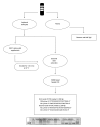Mycobacterium avium subspecies paratuberculosis causes Crohn's disease in some inflammatory bowel disease patients
- PMID: 24966610
- PMCID: PMC4064085
- DOI: 10.3748/wjg.v20.i23.7403
Mycobacterium avium subspecies paratuberculosis causes Crohn's disease in some inflammatory bowel disease patients
Abstract
Crohn's disease (CD) is a chronic inflammatory condition that plagues millions all over the world. This debilitating bowel disease can start in early childhood and continue into late adulthood. Signs and symptoms are usually many and multiple tests are often required for the diagnosis and confirmation of this disease. However, little is still understood about the cause(s) of CD. As a result, several theories have been proposed over the years. One theory in particular is that Mycobacterium avium subspecies paratuberculosis (MAP) is intimately linked to the etiology of CD. This fastidious bacterium also known to cause Johne's disease in cattle has infected the intestines of animals for years. It is believed that due to the thick, waxy cell wall of MAP it is able to survive the process of pasteurization as well as chemical processes seen in irrigation purification systems. Subsequently meat, dairy products and water serve as key vehicles in the transmission of MAP infection to humans (from farm to fork) who have a genetic predisposition, thus leading to the development of CD. The challenges faced in culturing this bacterium from CD are many. Examples include its extreme slow growth, lack of cell wall, low abundance, and its mycobactin dependency. In this review article, data from 60 studies showing the detection and isolation of MAP by PCR and culture techniques have been reviewed. Although this review may not be 100% comprehensive of all studies, clearly the majority of the studies overwhelmingly and definitively support the role of MAP in at least 30%-50% of CD patients. It is very possible that lack of detection of MAP from some CD patients may be due to the absence of MAP role in these patients. The latter statement is conditional on utilization of methodology appropriate for detection of human MAP strains. Ultimately, stratification of CD and inflammatory bowel disease patients for the presence or absence of MAP is necessary for appropriate and effective treatment which may lead to a cure.
Keywords: Crohn’s disease; Culture; Inflammatory bowel disease; Johne’s disease; Mycobacterium paratuberculosis; PCR.
Figures

References
-
- Brzezinski A. Medical management of the patient with an ostomy. In: Lichtenstein GR, Scherl EJ, editors. Crohn’s Disease: the Complete Guide to Medical Management. NJ: Thorofare; 2011. pp. 417–423.
-
- Dalziel TK. Thomas Kennedy Dalziel 1861-1924. Chronic interstitial enteritis. Dis Colon Rectum. 1989;32:1076–1078. - PubMed
-
- Moschowitz E, Wilensky A. Non-specific granulomata of the intestine. Am J Med Sci. 1923;166:48–66.
-
- Wilensky ME. A Non-specific granulomata of the intestine. Am J Med Sci. 1927;173:374–380.
-
- Crohn BB, Ginzburg L, Oppenheimer GD. Regional ileitis; a pathologic and clinical entity. Am J Med. 1952;13:583–590. - PubMed
Publication types
MeSH terms
Substances
LinkOut - more resources
Full Text Sources
Other Literature Sources
Medical
Research Materials

